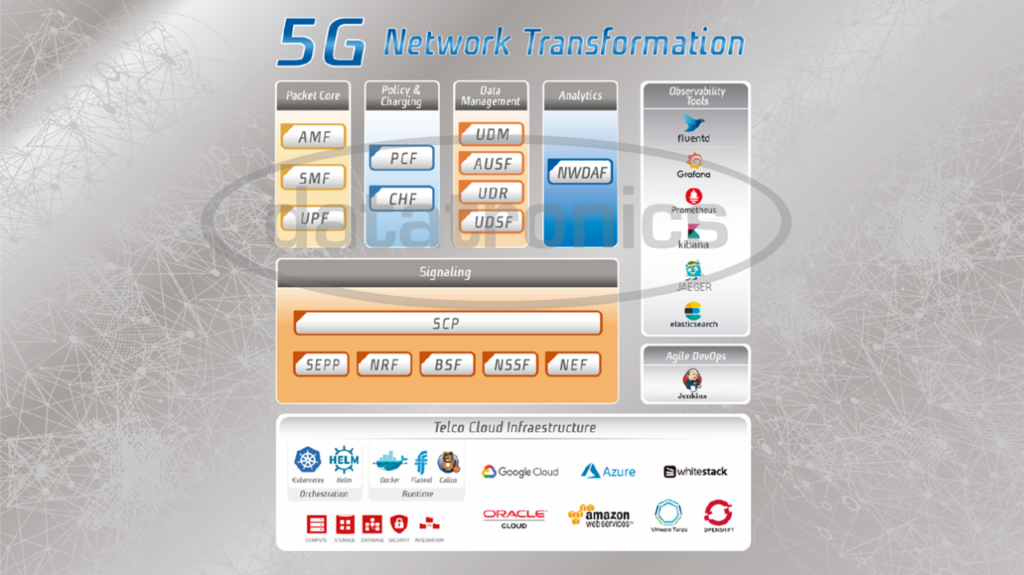In the last years, we have been hearing in different forums the main advantages that 5G would bring to our lives, like lower latency, higher capacity, a significant increase in the bandwidth, and the possibility to implement virtual networks (network slicing) in order to provide services as autonomous driving, remote surgery, etc that could not be implemented in 4G network.
Most of the MNOs (and MVNOs) have tried to jump on the bandwagon of the 5G by implementing 5G NSA (5G RAN) or the 5G SA (5G RAB + CN). Besides the benefits mentioned above, these implementations had brought lots of challenges, not only from the SBA network architecture perspective, also because most of the 5G NFs are cloud-native, and it changes the way to be independent of the Cloud infrastructure (private or public), the Cloud-native infrastructure and how it interacts with other areas which are challenging by itself.
5G transformation brings important challenges not only technical but also in the operation methods. In Datatronics, during the past last years, we have been working in different 5G deployments where we have deployed both the whole solution (Cloud Native infra + NFs) or where we had only provided the NFs and deployed them over third-party Telco Cloud providers.
This article is from our Chief Technology Officer, Juan Mas Forrest. You can read it in full here.

From our experience, the main challenges to be face, but not the only ones, are the following:
1. How to operate and manage NFs running on Cloud Native infrastructure. Introduction of “new” concepts in telecom networks such as container, Kubernetes, Helm, will mean a very big change in the technology that is used nowadays to operate and manage legacy existing platforms, normally based on VMs or BareMetal solutions
2. Integration with Legacy platforms, such as SNMP management platforms. Most of the different NFs providers use the same set of tools in order to log, trace or generate alarms/metrics of the NFs. These tools are really powerful and most of them have been used in the IT world for years. But this crashes with the “Legacy” third-party systems used nowadays by most of MNOs (MVNOs). Another topic to discuss could be how and who is providing these tools when the NF and cloud-native infra are provided by different vendors.
3. Orchestration: Cloud-native NFs are capable of autoscaling using any container orchestrator, such as Kubernetes. If the K8s cluster is deployed over VMs, using any VMs orchestrator, like OSM, will provide VM auto-scale capabilities. How to orchestrate from the top (NFs) to the lower (VMs) could be a challenge, especially if the NF and Infra providers are different.
4. Security: 5G SBA communications are built on web protocols and that’s why encryption and TLS become a must.
5. Monitoring 5G traffic. As 5G traffic including signaling will be encrypted sometimes capturing and monitoring this traffic is not straightforward and depending on the monitoring solution, NFs should have the capability of providing a decrypted feed to the network monitoring vendors.
That’s why the decision of which system integrator you want to make the 5G journey with becomes very important.



Recent Comments